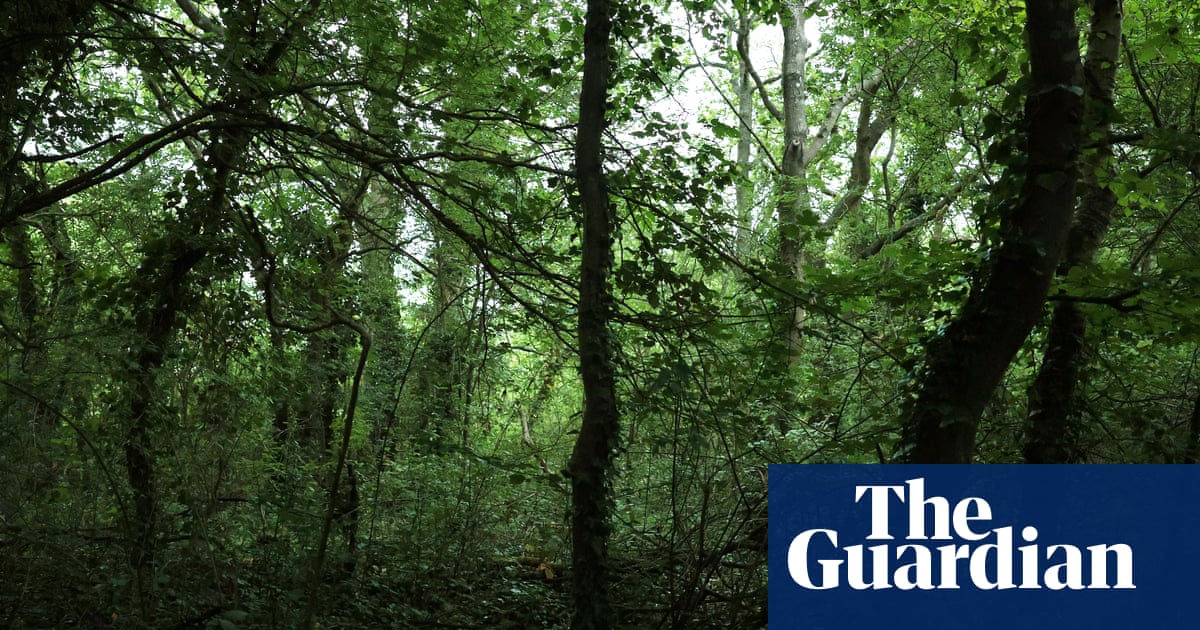Nightingales don’t sing much during the daytime. So when their clear, pure voices rang out from some brambles in Kent on a late spring morning, it felt as if they were campaigning for their home.
Their music has charmed writers from Keats to Oscar Wilde. But over the decades, the little brown bird has had its habitat gradually hacked away because the thick brambles it likes to nest in have little use for humans.
And now one of its most important strongholds is under threat from the Labour government’splanning and infrastructure bill. For the best part of a decade, developers have been eying up Lodge Hill in Kent, where more than 100 singing birds are known to live. The derelict army training camp, which is mostly off-limits to the public though there is a footpath through some of the woodland, is prime brownfield, a 10-minute drive from Strood, which is on the high-speed line to London.
In 2017,Medway council proposed 5,000 homesfor the area, but the plan was shelved after a survey showed that there were 85 singing birds in the bushes. Since the RSPB’s efforts at protecting the site, there are now more than 100. Shortly after this, however, Homes England, a government body, proposed 2,000 homes, then 500.
For now, the plans are to build just a few homes on the outskirts of the reserve, rather than on it. That is thanks to a designation (granted afteryears of campaigning by the RSPB) as a site of special scientific interest by Natural England, meaning that the habitat cannot be destroyed.
But if Labour’s planning bill is passed in its current form, that protection will vanish; developers will be able to pay to create nature somewhere else in the country to gain permission to build here.
And that will be a catastrophe for the nightingales. “Developers say they can just create some more habitat elsewhere, but that really doesn’t work for nightingales,” Joseph Beale, an RSPB conservation officer and nightingale expert, says: “They won’t move somewhere else, they’ll just go, we will lose them. Nightingales only tend to set up home when they hear others of their species sing. So they’ll fly over, and hear another nightingale sing, and know that means the area is good for nightingales. If this area falls silent, it will stop being used by them, and they won’t just set up somewhere new. This is a special area – nature has chosen it – let’s just protect it.”
There are thought to be just 5,500 or so breeding pairs still in the UK, a dramatic decrease of more than 90% in the last 50 years.
This grove is uniquely attractive to the birds because of its use by the Ministry of Defence, which means the woodland has been disturbed by heavy machinery and even explosions, leading to a variety of habitats which are heaven for songbirds. Thick brambles give way to ancient woodland and rare grassland, providing nesting and hunting sites as well as tall trees to sing from.
“They like scrub. They like thickets,” Beale says. “Unfortunately, a lot of that seems to grow up on land that’s been left a little while, like brownfield and formerly developed land, and this is exactly what developers like. So they often fall through the cracks of planning, because they live in this sort of habitat that’s a little bit undervalued.”
When the Guardian joined the RSPB for a walk around the site, the air was thick with birdsong; immediately identifiable were chiffchaffs, blackcaps, woodpeckers, chaffinches and scores of baby blue tits. In the long tunnel of trees and hedges, walking down the footpath felt like being in a high-rise city of songbirds.
And – amazingly – we heard four nightingales. Their complex song cuts through all the rest, their voices are so strong and unwavering. “It’s like all the birdsong in the world condensed into one sound,” says Beale. He has heard the bird hundreds of times, but is just as starstruck on each occasion.
The nightingale was once common acrossEngland, before its homes were demolished. These days, its meagre population has been squeezed into south-east England, unfortunately, the area with the biggest housing pressure. If the bill is passed, the protection of being a Site of Special Scientific Interest will be meaningless.
“It essentially undermines that pretty fundamental environmental principle that you should try and avoid the most precious sites first,” Beale says. “At the moment even before this law is passed, we’re fighting to stand still. You know, we’re not even saying, can we have more protections? We’re trying to save what we already have, which is the remnants of what we used to have. So we are really worried.”
Of the suggestion Keir Starmer should come and hear the nightingales, Beale says: “It would probably do him some good.”
Birdsong recorded by photographer Martin Godwin
